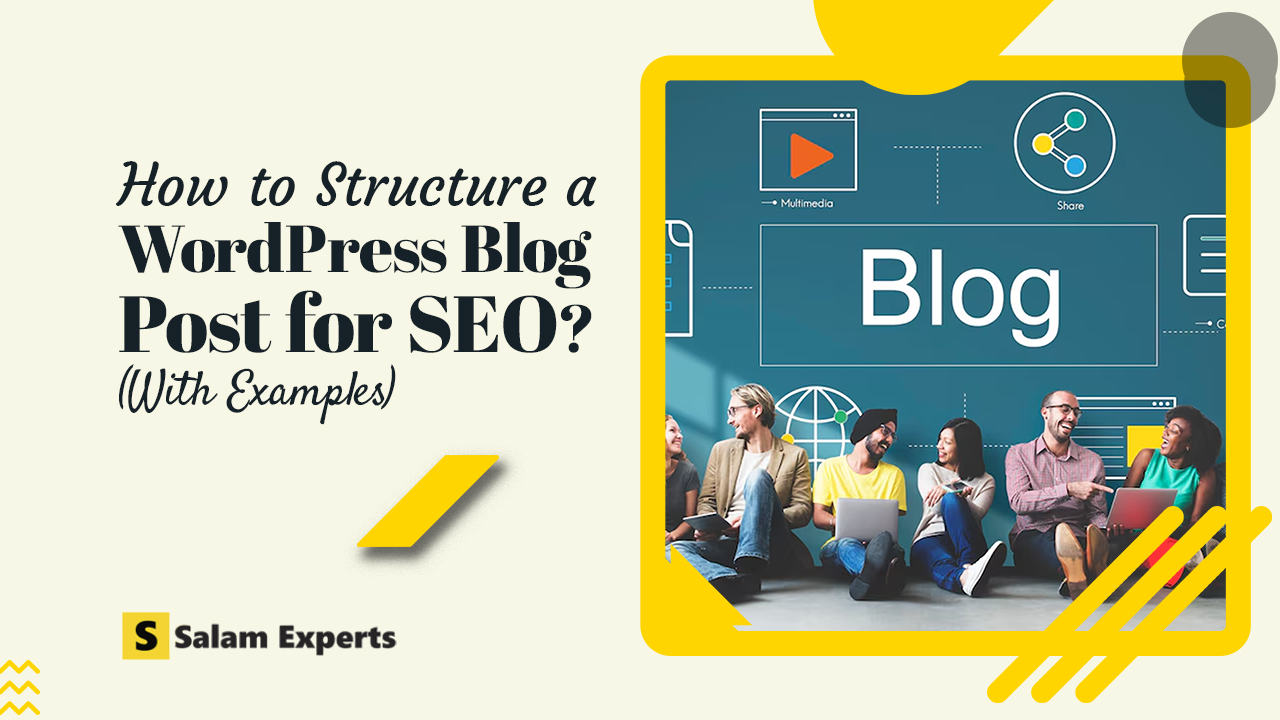How to Structure a WordPress Blog Post for SEO (With Examples)

Writing a blog post is easy. But structuring it for SEO success — now that’s a different game. A well-structured blog post helps Google understand your content and keeps users engaged, which both improve your rankings.
In this guide, you’ll learn how to format and optimize your WordPress blog posts for maximum SEO impact, with examples included.
Why Blog Post Structure Matters for SEO
A solid structure:
- Makes your post easier to read
- Helps Google crawl and index your content properly
- Increases time on page and user engagement
- Boosts chances of ranking for featured snippets
The Ideal WordPress Blog Post Structure
1. SEO-Friendly Title (H1)
Your title is your blog’s first impression — both for users and search engines.
Best Practices:
- Include your primary keyword
- Keep it under 60 characters
- Make it compelling and clear
Example:
How to Optimize Your WordPress Website for Google Ranking
2. Engaging Introduction
Your intro should:
- Hook the reader
- Explain what they’ll learn
- Include the main keyword (naturally)
Example:
Are you struggling to get traffic to your WordPress site? In this post, I’ll walk you through actionable SEO techniques to boost your site’s visibility — no jargon, just results.
3. Use Subheadings (H2, H3, H4)
Break content into sections using H2 for main sections, H3 for subsections.
Why?
- Helps readers skim
- Helps Google understand structure
- Improves readability on mobile
Example Structure:
markdown
CopyEdit
H1: How to Speed Up Your WordPress Website
H2: Choose a Fast Hosting Provider
H2: Use a Lightweight Theme
H3: Best Themes for Speed
H2: Install a Caching Plugin
4. Use Short Paragraphs and Sentences
Wall-of-text = reader drop-off. Keep paragraphs 2–4 lines max.
Pro Tip: Add bullet points, bold text, or emojis to break monotony and emphasize key points (if it fits your style).
5. Internal & External Linking
Internal links:
- Link to your own blog posts or pages
- Help with site structure and crawl depth
External links:
- Link to trusted sources
- Show Google your content is well-researched
Example:
For more on Core Web Vitals, check out Google’s official guide.
6. Use Relevant Images & Alt Tags
Images improve engagement and visual understanding. But don’t forget SEO.
Checklist:
- Compress images for speed
- Use descriptive file names
- Add alt text with keywords
Example:
Alt text: “Example of WordPress SEO plugin settings”
7. Use Focus and Semantic Keywords
- Use your primary keyword in:
- Title (H1)
- First 100 words
- At least 1 H2
- Meta description
- Image alt tags
Use semantic keywords (related terms) naturally throughout the post.
8. Add a Compelling Meta Description
Though it doesn’t directly affect rankings, it impacts click-through rates (CTR).
Tips:
- Keep under 155 characters
- Include your main keyword
- Give a reason to click
Example:
Learn how to structure your WordPress blog posts for SEO. Boost your rankings, improve engagement, and write content Google loves.
9. Use Schema Markup (If Possible)
If your blog post includes FAQs, recipes, reviews, etc., you can use schema to increase your chances of appearing in rich results.
WordPress plugins like Rank Math or Yoast support this easily.
10. Include a Clear Call-to-Action (CTA)
Tell the reader what to do next:
- Read another article
- Subscribe
- Book a service
- Leave a comment
Example CTA:
Want help with your WordPress SEO? Let’s work together!
Bonus: Use a Table of Contents (TOC)
Adding a TOC:
- Improves navigation (especially on mobile)
- Helps Google create jump links in search results
Use plugins like:
- Easy Table of Contents
- LuckyWP Table of Contents
Final Thoughts
Great SEO blog posts are clear, engaging, and well-structured. If you follow this structure and write with the user in mind, your posts will have a much better chance of ranking high and converting visitors.






